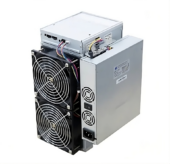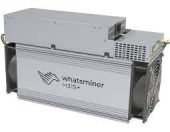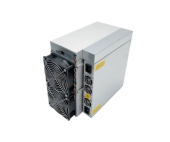Description
The ASIC, IceRiver KS3 8.2 TH/s, is a specialized cryptocurrency mining device designed specifically for mining Kaspa or other cryptocurrencies using the kHeavyHash algorithm. The package includes an IceRiver PSU power supply.
Some relevant features of the ASIC are detailed below:
- Noise level: This Kaspa mining ASIC is designed for home use and does not generate significant noise, emitting only 70 dB.
- Power consumption: The power consumption of this ASIC is very low, which makes it suitable for home use. It is recommended to use a household electricity tariff.
Characteristics of the miner:
| KAS Hashrate | 8.2 TH/S(±10%) |
|---|---|
| Power | 3200W/h(±10%) |
| Hashrate-to-power ratio | 8TH 3200W |
| Dimensions (with packaging) | 490×300×400(mm) |
| Dimensions | 370×195×290(mm) |
| Weight | 17.6kg |
| Net Weight | 14.7kg |
| Connection | ethernet |
| Input Voltage | 170-300V AC |
| Operating Temperature | 0~35 ℃ |
What is Kaspa?
Kaspa is a cryptocurrency that is based on blockchain technology, just like Bitcoin and other popular cryptocurrencies. As a beginner, it is important to understand that a cryptocurrency is a type of digital currency that uses cryptography to secure and verify transactions made on its network.
Kaspa stands out as a network specifically designed to address some challenges and limitations that have been observed in other cryptocurrencies. One of Kaspa's main features is its consensus algorithm, called kPoW (Kaspa Proof of Work), which ensures the security and reliability of the network.
One of the significant differences of Kaspa compared to other cryptocurrencies is its ability to scale efficiently. This means that Kaspa has the ability to handle a greater number of transactions per second and can grow more effectively as more users join the network. This scalability improves the speed and efficiency of transactions, which can be beneficial to the widespread adoption of cryptocurrency.
In addition, Kaspa is considered a decentralized and open source network, which means that it is not controlled by a central authority and that anyone can access its source code and contribute to the development of the platform.













